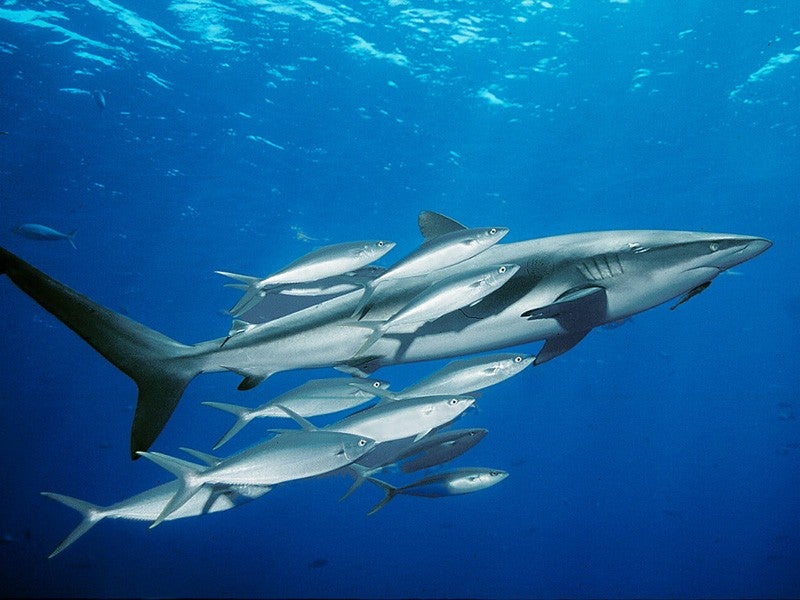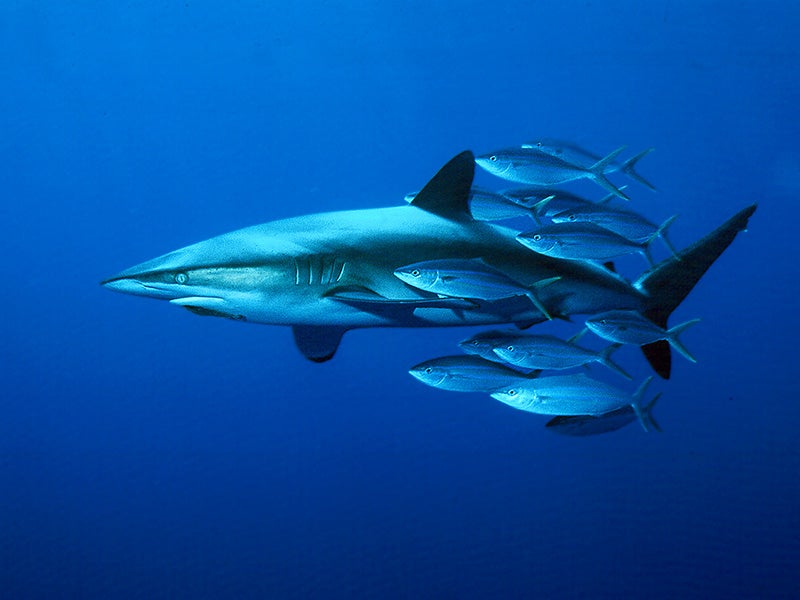Saving Dusky Sharks in the Gulf of Mexico and Atlantic
A keystone ocean predator, dusky sharks are an integral part of a healthy ocean. Despite the federal government acknowledging that dusky sharks were severely depleted nearly 20 years ago, they are still being overfished today in violation of federal law.
Case Overview
The dusky shark (Carcharhinus obscurus) is a highly migratory apex predator that has experienced dramatic declines in the population’s abundance due to fishing pressure. Averaging about twelve feet long, they inhabit warm temperate and tropical ocean waters around the globe. The northwest Atlantic population of dusky sharks occurs from southern Massachusetts to Florida, the Caribbean Sea, and the Gulf of Mexico. They undertake lengthy migrations up and down the coast in summer and fall.
Dusky sharks grow slowly and have low reproductive rates, making them highly vulnerable to overfishing. They can live as long as 40 years, but they do not reach sexual maturity until they are about 20 years old. Mature females reproduce only every two to three years, accommodating a nearly 18-month gestation period and a one-year period of rest in between pregnancies.
Dusky sharks became a popular target for commercial and recreational fishing off the U.S. Atlantic and Gulf coasts in the late 1970s, in part because dusky sharks are a highly desired species in the international shark fin trade. As a result, the population experienced a steep decline over the next two decades. In response, the National Marine Fisheries Service identified dusky sharks as a “Species of Concern” in 1997. It remains a Species of Concern today, meaning that the agency recognizes that proactive conservation measures are necessary to address threats to the species.
The Fisheries Service has identified dusky sharks as an “overfished” fish population and subject to “overfishing” since at least 2006. Since then, the dusky shark has remained overfished and at very low abundance because, while fishermen have been prohibited from directly hunting and retaining dusky sharks since 2000, large numbers of these sharks are still caught incidentally as bycatch by commercial and recreational fisheries, and many of these sharks die.
Bycatch is the capture of non-target fish and ocean wildlife. Dusky sharks are hooked by bottom longline gear used to target other shark species and reef fish species, including snappers and groupers, as well as pelagic longline gear used to target tuna, swordfish, and other fish.

Case Updates
Case page created on October 27, 2015.

